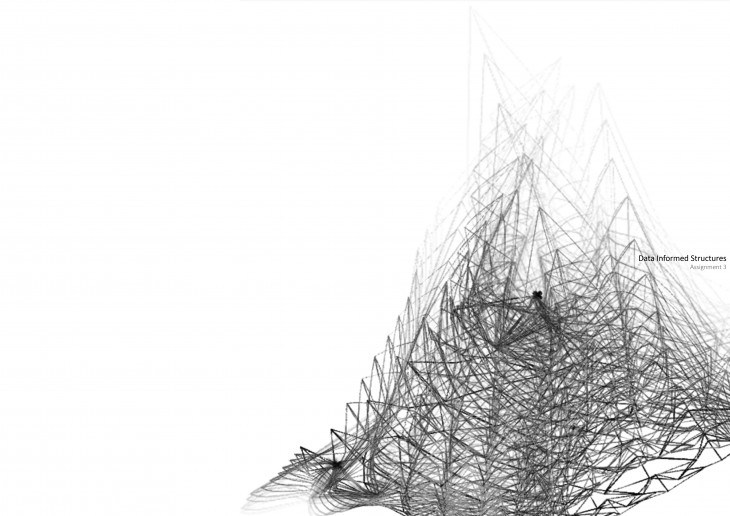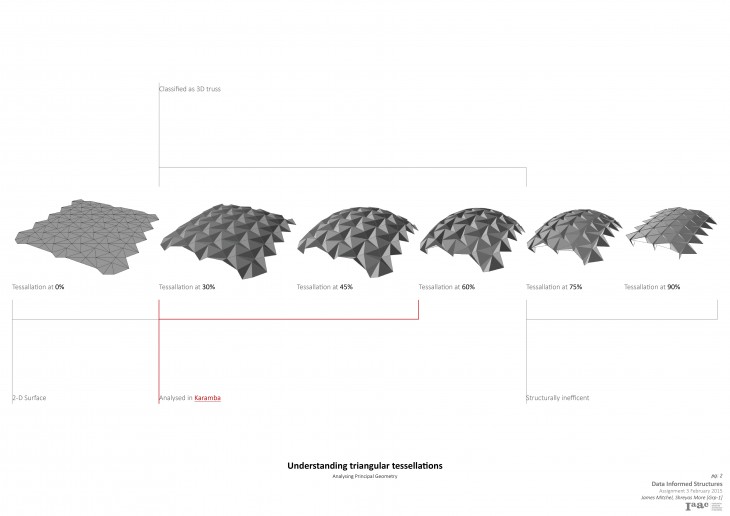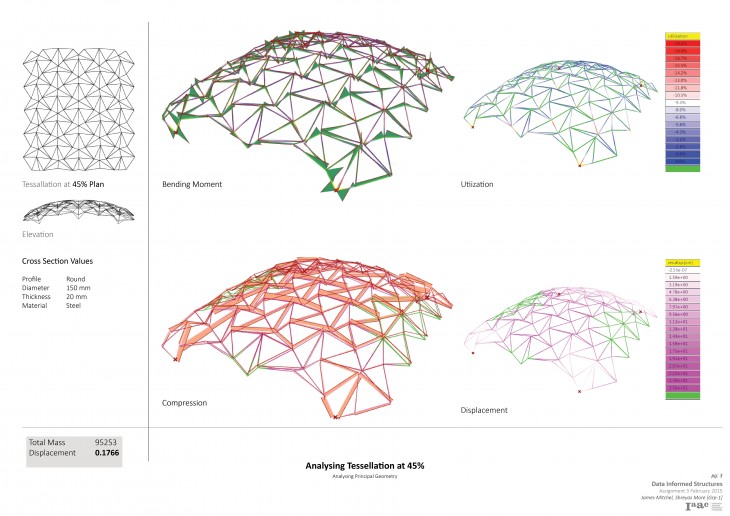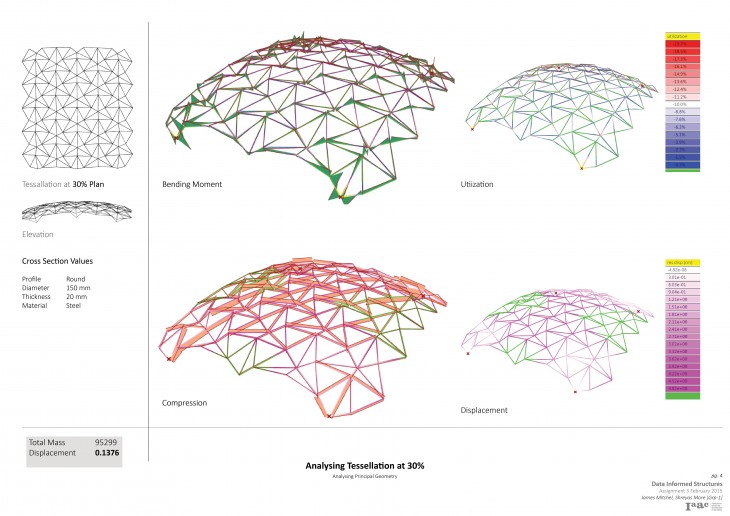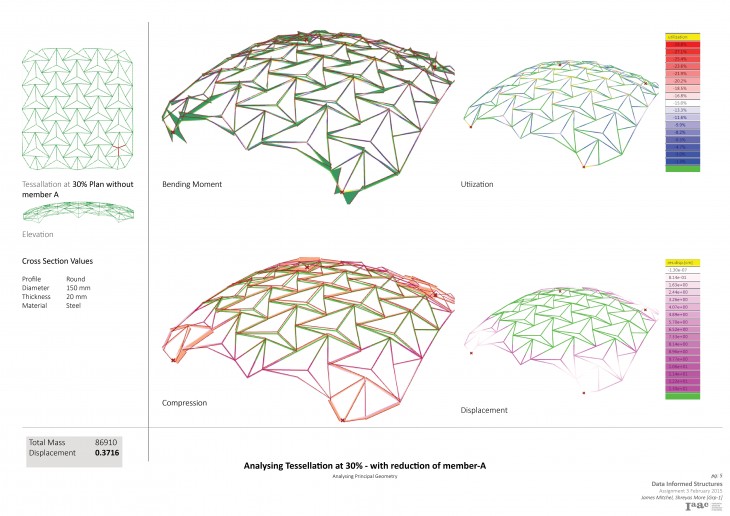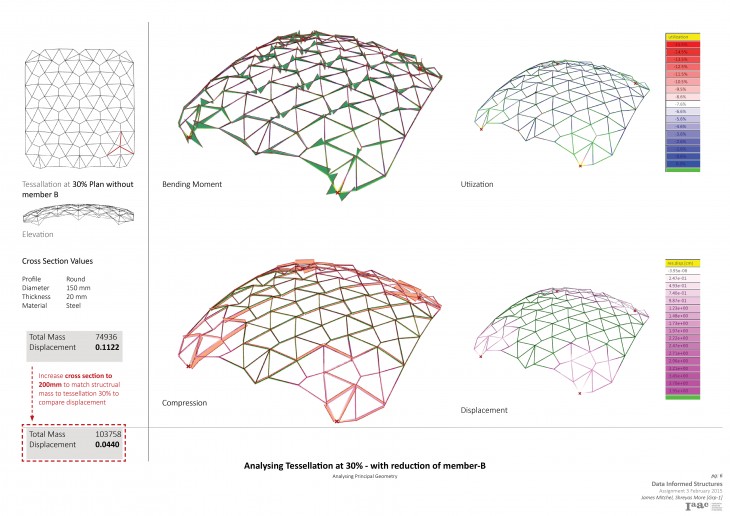Conventionally a truss consists of top and bottom members spanned between supports with diagonal members working in compression and tension. The aim of this assignment was to take up different phases of tessellations and finding, with the presence of only the diagonal members, can the geometry structurally function as a 3D truss and have stability.
Tessellations with triangulation were observed from relaxed flat 2D geometry to its peak 3D constellation. Model at 60%, 45% and 30% were analysed with karamba where 60% failed exceptionally to support the span of 20m.
The geometries with 45% opening were expected to perform best given the angle of members. However it has a large displacement and bending moment values as observed in the karamba results.
The tessellation with 30% open performed better than 45% open with a lesser displacement. This model was further taken to analyse with reduction of structural members-A and structural members-B. The analysis showed the structure displaced even less with far less mass with the absence of structural members-B. The cross section of this model was increased to match weight as in the 30% pure tessellation study.
Conclusion, the displacement was reduced by 300% with lesser members spanning the 20m space without member-B.

